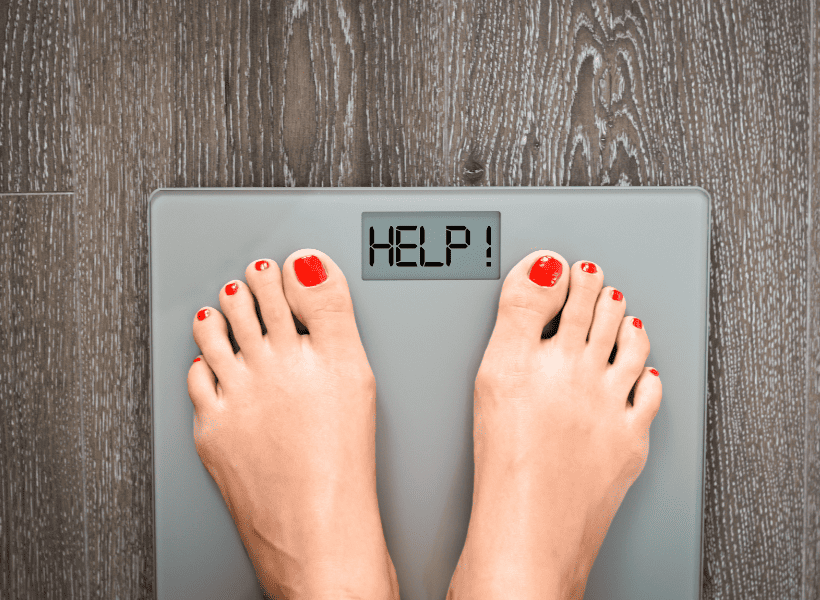
Not a TYMLOS ® (abaloparatide) injection patient
This post was sponsored by Radius Health, Inc., and does not constitute medical advice. My personal story and opinions are my own. I am not a medical professional and am not qualified to give medical advice. Please talk with your healthcare provider about your individual medical situation.
Remember when we didn’t have to worry about things like bone health (osteoporosis), menopause, carbs, and cholesterol? Never could I have imagined I would turn into my mother in so many ways. The carefree life of eating whatever I wanted came to an abrupt halt at around age 40, just like she said it would. My days of hearing her advice about the low sodium, low cholesterol, high calcium, heart-healthy diet with a roll of my eyes were long gone, which is why I am prioritizing my health and teaming up with Radius Health.
Luckily, there are many treatment options available for postmenopausal women with osteoporosis at high risk for fracture, such as TYMLOS ® (abaloparatide) injection. As always, women with postmenopausal osteoporosis at high risk for fracture should talk with their healthcare provider about what treatment option may be best for them.
I think many of us, me included, go through our 20s and 30s oblivious that we will ever be as old as our mom and be postmenopausal or faced with conditions so many women are faced with in their 40s, 50s and beyond.
Then, one day, we leave the routine doctor appointment with the badge of osteopenia or even postmenopausal osteoporosis. Again, we continue to assume and think it’s a “natural and unavoidable part of aging” – but I’m here to share with you that that may not be true.
If you look up the word osteoporosis in the dictionary, it literally means “porous bones.” In women, estrogen plays a role in regulating the bone formation and resorption process. Women start losing estrogen at menopause which can lead to women beginning to lose more bone than they are replacing or building. As a result, bones become fragile and break easily.
Did you know nearly 1 in 2 women in the U.S. over the age of 50 will have a fragility fracture (or low-impact fracture that is often the result of a fall from standing height or lower) in her remaining lifetime? Unfortunately, the connection between osteoporosis and related fractures is often overlooked.
Nutrition Goals for Healthy Bones
1.) Eat more vegetables, fruits, and grains.
Include at least 4 servings of vegetables and 3 servings of fruits daily. Fruits and vegetables are considered nutrient-dense, which contain many essential nutrients per calorie. They include magnesium, potassium, and vitamins C, K, and A, which all are excellent resources for healthy bones.
2.) Make sure to get enough calcium.
We grew up with commercials telling us to drink milk for strong bones. While milk is a good source of calcium, it can also be found in kale, broccoli, as well as calcium-fortified foods such as cereals, juices, etc. Vitamin D-fortified foods, like salmon and tuna, are great sources to help to absorb the calcium. Calcium and vitamin D are essential for bone health – and not getting enough can lead to weak bones.
3.) Limit alcohol.
Consuming heavy amounts of alcohol can lead to bone loss.
A great way to monitor your food and beverage intake to ensure your body is getting the vitamins and minerals needed for optimal bone health is by tracking your intake. You should watch your nutrients or macros (carbs, proteins, and fats) to adjust your diet as needed.
Treatment Options for Postmenopausal Osteoporosis
Getting treatment for something like postmenopausal osteoporosis must be a priority for women, especially women who are postmenopausal, who should talk with their healthcare provider about what treatment option may be best for them. Bone health is an important part of our overall health, which should be maintained as we age for increased mobility and quality of life.
One treatment option available is TYMLOS, an anabolic medication for osteoporosis in postmenopausal women at high risk for fracture. Approved by the US Food and Drug Administration (FDA) in April 2017, TYMLOS may decrease the chance of having a fracture of the spine and other bones in postmenopausal women with thinning and weakening bones (osteoporosis).
- Visit TYMLOS.com to learn more about postmenopausal osteoporosis, the connection to fractures, and TYMLOS as a treatment option for postmenopausal women with osteoporosis at high risk for fracture.
Please see Important Safety Information below and full Prescribing Information, including Boxed Warning, as well as the TYMLOS Medication Guide for risk information.
INDICATIONS AND IMPORTANT SAFETY INFORMATION
What is the most important information I should know about TYMLOS?
TYMLOS may cause serious side effects including:
- Possible bone cancer (osteosarcoma). During animal drug testing, TYMLOS caused some rats to develop a bone cancer called osteosarcoma. It is not known if people who take TYMLOS will have a higher chance of getting osteosarcoma.
- Tell your healthcare provider right away if you have pain in your bones, pain in any areas of your body that does not go away, or any new or unusual lumps or swelling under your skin that is tender to touch.
Before you take TYMLOS, tell your healthcare provider about all of your medical conditions, including if you:
- have Paget’s disease of the bone or other bone disease.
- have or have had cancer in your bones.
- have or have had radiation therapy involving your bones.
- have or have had too much calcium in your blood.
- have or have had too much of an enzyme called alkaline phosphatase in your blood.
- have or have had an increase in your parathyroid hormone (hyperparathyroidism).
- will have trouble injecting yourself with the TYMLOS pen and do not have someone who can help you.
- are pregnant or plan to become pregnant. TYMLOS is not for pregnant women.
- are breastfeeding or plan to breastfeed. It is not known if TYMLOS passes into your breast milk. You and your healthcare provider should decide if you will take TYMLOS or breastfeed. You should not do both.
Tell your healthcare provider about all the medicines you take, including prescription and over-the-counter medicines, vitamins, and herbal supplements.
What are the possible side effects of TYMLOS?
TYMLOS can cause serious side effects including:
- Decrease in blood pressure when you change positions. Some people may feel dizzy, have a faster heartbeat, or feel lightheaded soon after the TYMLOS injection is given. These symptoms generally go away within a few hours. Take your injections of TYMLOS in a place where you can sit or lie down right away if you get these symptoms. If your symptoms get worse or do not go away, stop taking TYMLOS and call your healthcare provider.
- Increased blood calcium (hypercalcemia). TYMLOS can cause some people to have a higher blood calcium level than normal. Your healthcare provider may check your blood calcium before you start and during your treatment with TYMLOS. Tell your healthcare provider if you have nausea, vomiting, constipation, low energy, or muscle weakness. These may be signs there is too much calcium in your blood.
- Increased urine calcium (hypercalciuria). TYMLOS can cause some people to have higher levels of calcium in their urine than normal. Increased calcium may also cause you to develop kidney stones (urolithiasis) in your kidneys, bladder or urinary tract. Tell your healthcare provider right away if you get any symptoms of kidney stones which may include pain in your lower back or lower stomach area, pain when you urinate, or blood in your urine.
The most common side effects of TYMLOS include:
- dizziness
- nausea
- headache
- fast heartbeat
- feeling very tired (fatigue)
- upper stomach pain
- vertigo
These are not all the possible side effects of TYMLOS. Call your doctor for medical advice about side effects. You may report side effects to FDA at 1-800-FDA-1088.
- If you take more TYMLOS than prescribed you may experience symptoms such as muscle weakness, low energy, headache, nausea, dizziness (especially when getting up after sitting for a while) and a faster heartbeat. Stop taking TYMLOS and call your healthcare provider right away.
What is TYMLOS?
TYMLOS is a prescription medicine used to:
- decrease the chance of having a fracture of the spine and other bones in postmenopausal women with thinning and weakening bones (osteoporosis).
- treat osteoporosis in postmenopausal women who are at high risk for bone fracture.
It is not known if TYMLOS is safe and effective for children 18 years and younger.
It is not recommended that people use TYMLOS for more than 2 years during their lifetime.
TYMLOS should not be used in children and young adults whose bones are still growing.
TYM-US-02366 2/19



